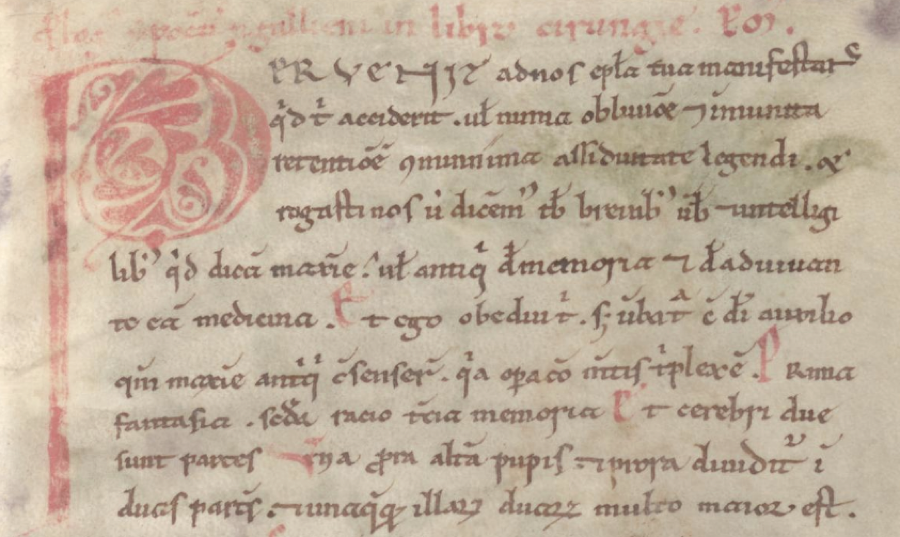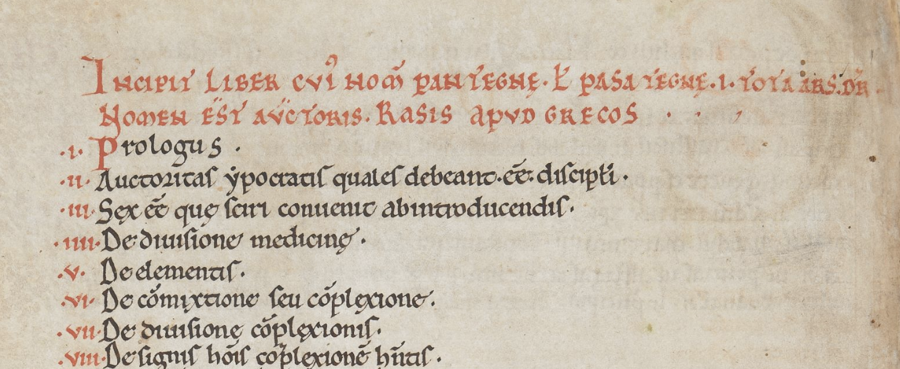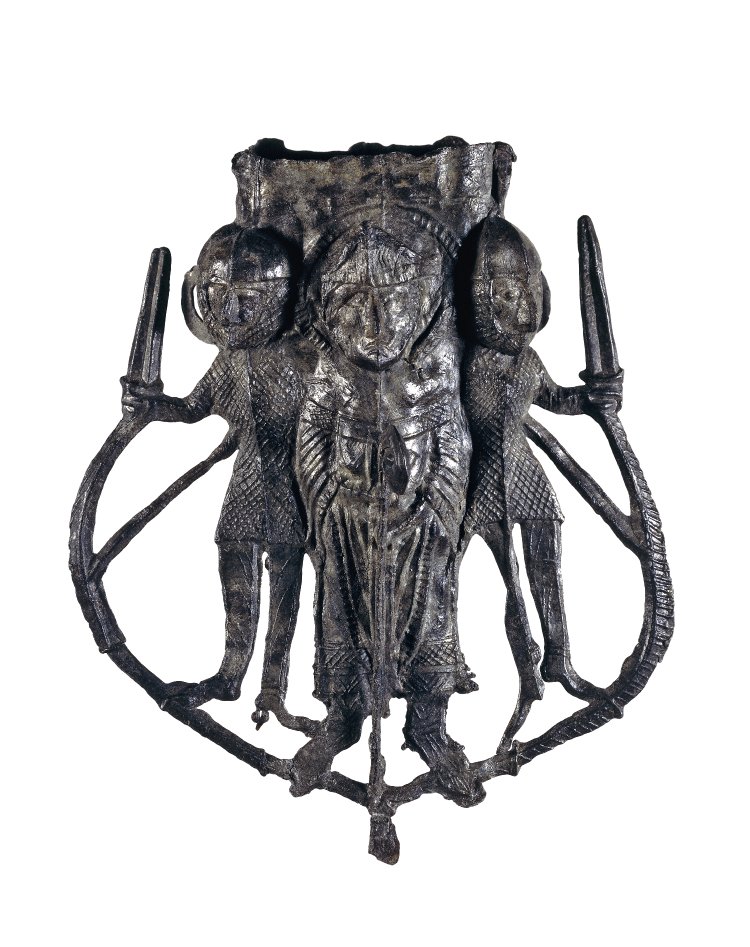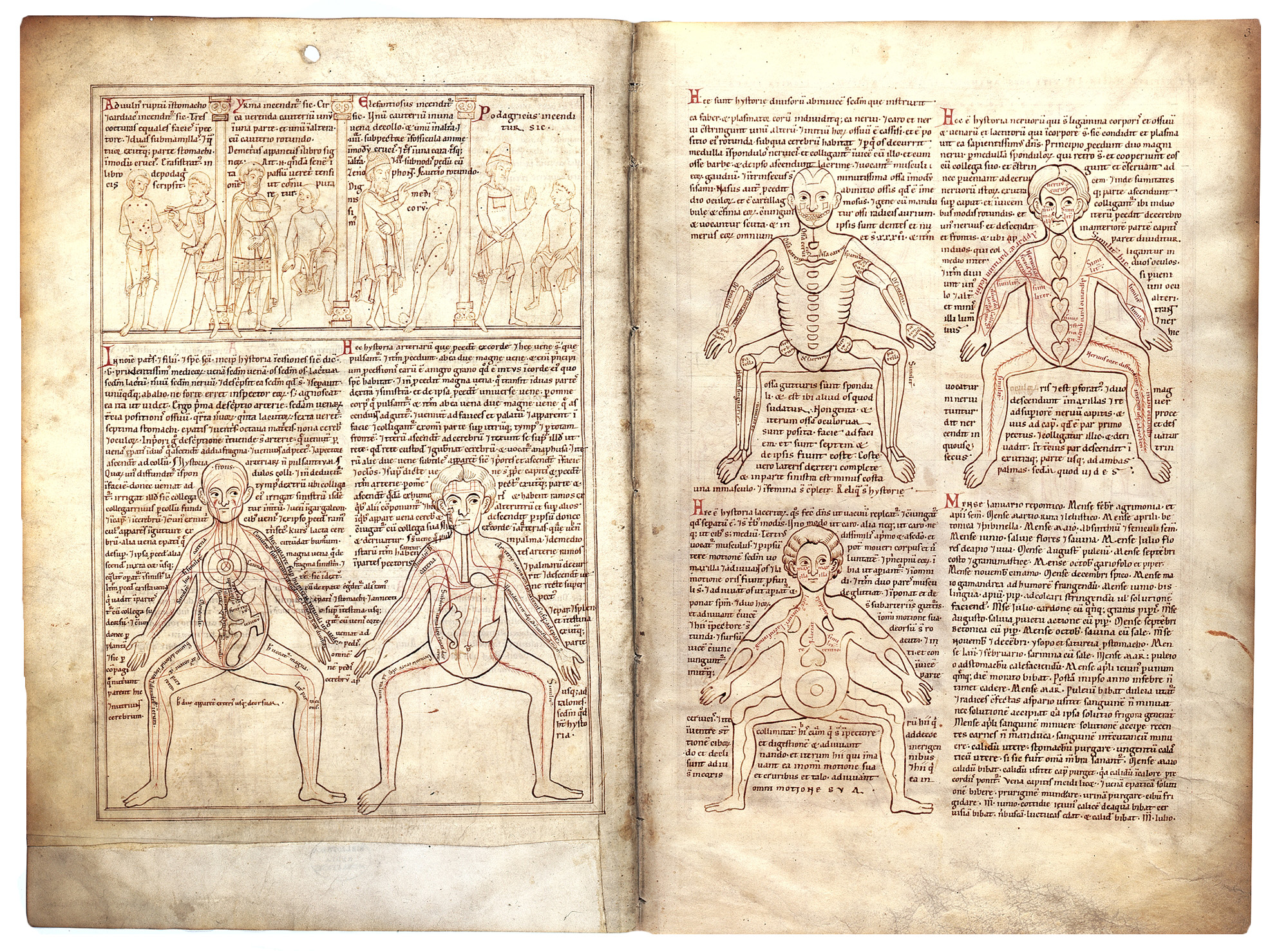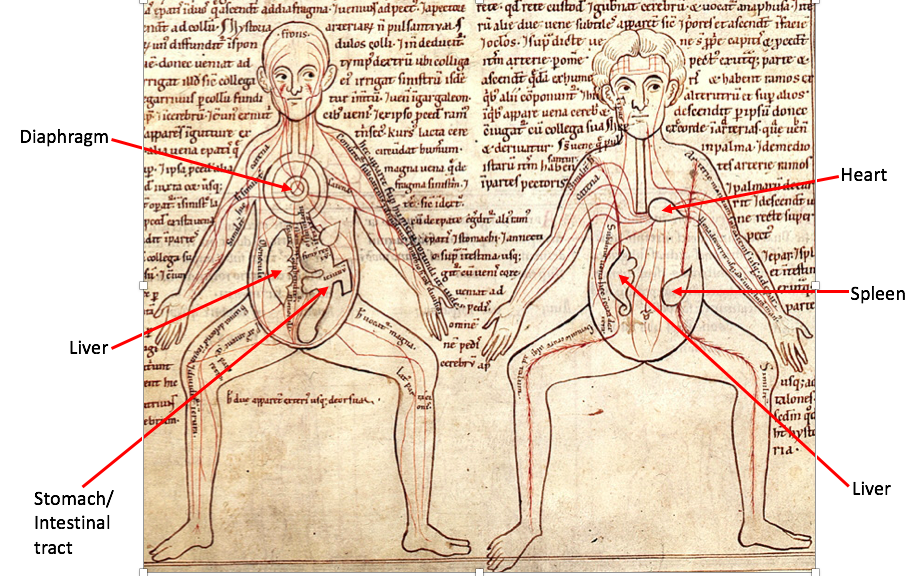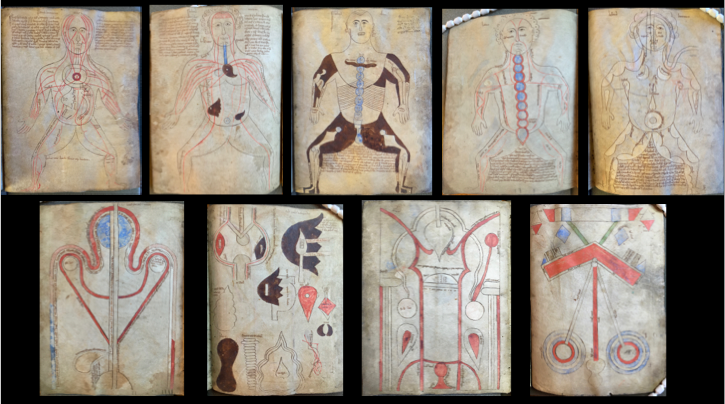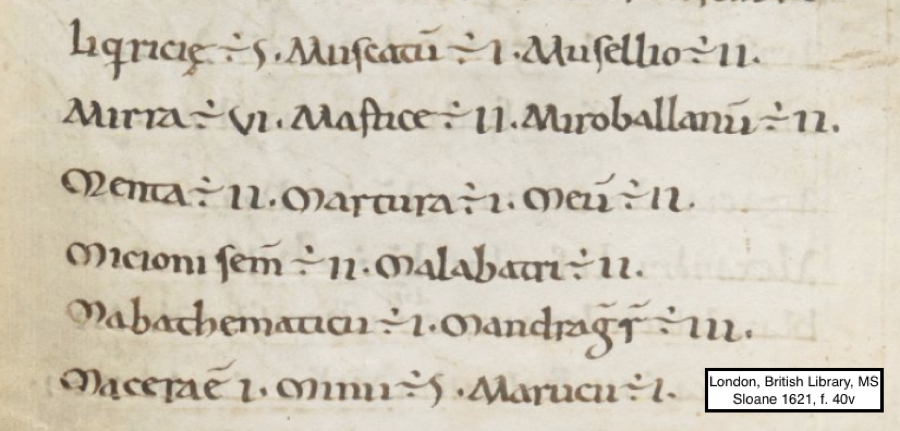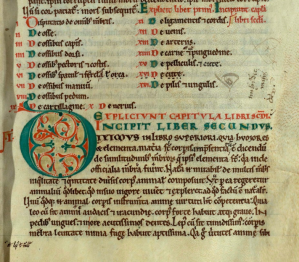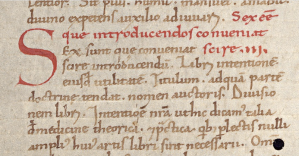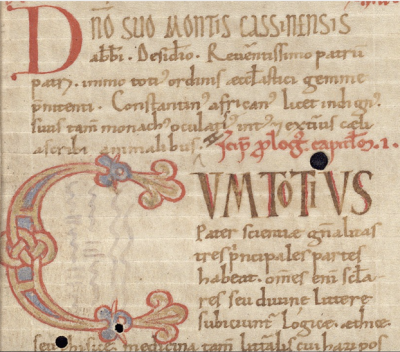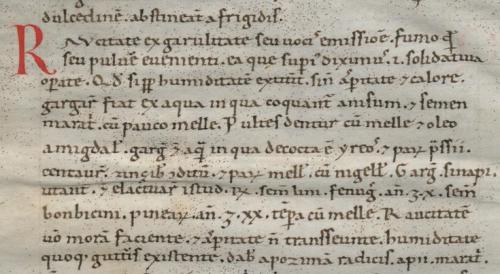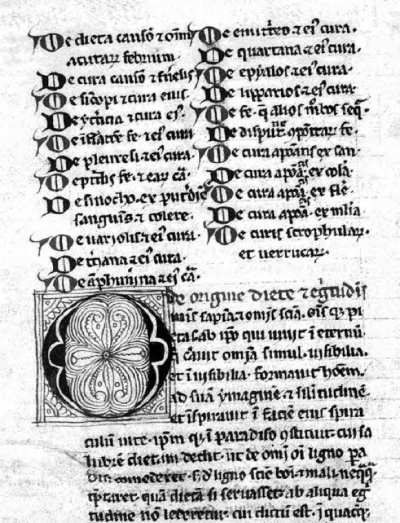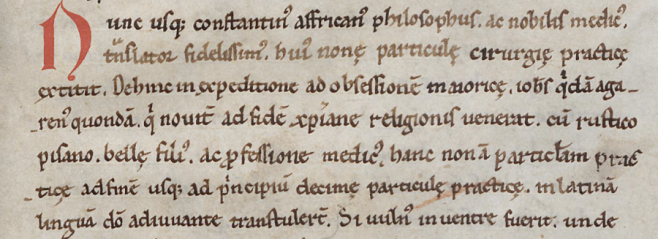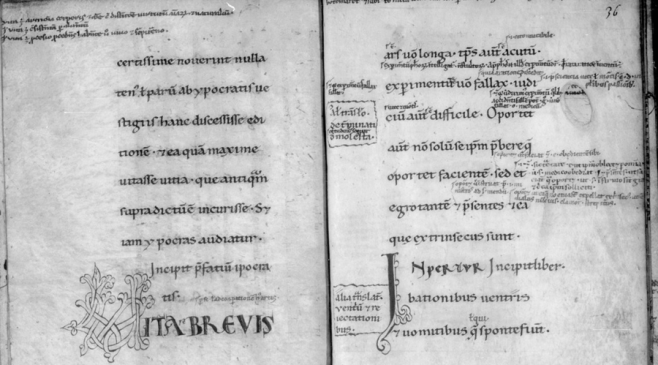A Post in Honor of World Leprosy Day 2024
Opening of the text of Constantine the African’s De elephancia (On Leprosy), in a recently discovered later 12th-century manuscript. Assisi, Biblioteca del Convento di S. Francesco, MS 573, f. 115r.
We don’t know exactly when Constantine the African wrote his treatise on leprosy, De elephancia (and yes, the ancient Greek name for the disease means exactly what it looks like: “the elephant disease”). Nor, in the absence of a dedicatory prologue (which we do have for some of his other texts), can we say whether this short, 11th-century Latin treatise was a “bespoke” production, prepared for a particular person or situation.
Yet given our modern image of medieval Europe as a landscape riddled with leprosy, and given the extraordinary medieval popularity of many of Constantine’s other works (some of which survive in more than 100 copies), the existence of only ten independently circulating copies of Constantine’s leprosy text is puzzling. Something doesn’t sync.
The last Sunday of January every year is designated World Leprosy Day. It is meant to acknowledge the fact that leprosy (“Hansen’s Disease”) still exists, even though effective treatments to cure the condition have been available for several decades. The theme for World Leprosy Day 2024 is “Ending Stigma, Embracing Dignity.” Stigma is a very real factor in the continued prevalence of leprosy. As many as 200,000 people per year are newly diagnosed and many are successfully cured, yet public shame and social shunning still make many who are afflicted reluctant to seek out diagnosis and care. In other words, we should put as much effort into understanding why stigma persists as we do investigating the pathogen’s evolutionary history or its potential animal or environmental reservoirs.
As we commemorate World Leprosy Day this year, we might think about what it means that close to 950 years after its composition, we still have gaps in our knowledge not simply about the author of the De elephancia—the Arabic-speaking North African emigré, Constantinus Africanus, who died before 1098/99—but also about the text’s original users and its significance as a sophisticated piece of medical writing. What did it mean that one of the most influential Benedictine writers of the Middle Ages had written a specialized text on this disease, without stigmatizing it or its sufferers, but rather treating it as natural condition meriting natural interventions?
The Character of the Text
In Latin, the De elephancia is just under 2600 words. Just a bit longer than this blogpost. Less than a full page in some finely-written manuscript copies. Yet it is longer than the attention Constantine gives to leprosy in his other works where he discusses the disease: the theoretical half of the Pantegni, a major encyclopedia of medicine, or the Viaticum, a “handbook for travelers.”
In this mid-13th century copy of the De elephancia, made in southern France, the text takes up less than one page. Würzburg, Universitätsbibliothek, m. p. med. f. 3, f. 183r (detail).
Constantine’s assessments of leprosy, here in the De elephancia and in the Viaticum, convey the same theoretical understanding of the disease, one that had not previously been found in Latin medical writings. That is, that the disease is fourfold in nature, stemming from differences that arise depending on which of the four humors is defective. He begins the De elephancia thus:
It behooves the physician to investigate the putrefaction of the chyme, from which are born the four humors, along with their natures, which are either simple or complex. The cause of the putrefaction can come either from the corruption of the semen (of the male or the female),1 or from both, or from the corruption of the air, or food and drink. From these corrupt humors arises the infirmity, which is customarily called elephantia.2 The discernment of this condition is difficult and laborious in its early phases. But after it becomes openly apparent, this disease is harder to treat.
MF, p. 74
Constantine then goes on to specify the symptoms that characterize each of these four kinds of leprosy. Then, he introduces their names:
When the disease arises from blood, it is called alopicia. When instead it is created by red bile, it is named leonina. If from black bile, it is called elephantia. If from phlegm, it is called tiria.
MF, p. 80
Treatments—involving phlebotomy or cupping, purgatives, diet, eye washes, and astringents to treat the pustules, and ointments to soothe the skin—are then laid out. All are very detailed and precise, down to the amounts of individual ingredients. Take, for example, this unguent:
This unguent cleanses the whole body of putrefaction:Take three ounces of litharge [lead oxide], two ounces each of alum and quicksilver, two drams each of roses and white lead, three and a half drams each of savin, liquid storax, cadmium, one ounce each of the ashes of mastic and vitriol. Let all these be mixed with the juice of myrtle fruit, which is then cooked down until only one-third remains, and add rose oil as needed. Then, anoint the body with this for seven days; on the eighth day, [anoint just] with rose oil. On the ninth day, [anoint] with vinegar of wild grapes. On the tenth day, let the patient bathe.
MF, p. 88
Any dermatologist reading these instructions is probably cringing, because these are powerful chemicals; several have long since been banned from medicinal use. But for many centuries, such powerful astringents and corrosives were used to treat skin conditions. What is notable here is that after the week-long regimen of corrosives, there was an ameliorating healing regimen of oil, then vinegar, and then simple bathing in water.
Other sections of the text draw on a complicated polypharmacy that, in the context of 11th-century southern Italy, would have assumed a certain wealth of its users. And that is one of the clues that prompts us to ask: was this text bespoke?
The Author and His Audience
As noted, the work has no dedicatory preface to tell us for whom it was made, nor to explain the author’s intentions. In fact, it is almost certain that we really shouldn’t be calling Constantine “the author.” It is well known that Constantine functioned primarily as a translator, rendering Arabic works into Latin (mostly by writers from North Africa, whence he came—and whence the epithet Africanus). The De elephancia, too, may have been a translation, likely of one of Constantine’s most frequent sources, the Qayrawan author, Ibn al-Jazzār (d. ca. 979).
We know that, eventually, after his arrival in southern Italy, Constantine was well supported by grants and donations from the local nobility and church leaders to render such works of Arabic medicine into Latin.3 While we don’t know the exact order of most of his compositions, it is likely that De elephancia was one of his earlier translations, perhaps coming before his De stomacho (On the Stomach), written for an archbishop of Salerno who had patronized him before dying in 1085, and the Pantegni, written for his abbot at Monte Cassino, who became pope that same year.
As with the archbishop and his stomach problems, it’s possible that the patronage Constantine received came from his ability to produce bespoke works for particular clients. One such potential local “client” who was manifesting leprosy symptoms around this time, and whose family would have had the wealth to obtain expensive ingredients, was an elder (and illegitimate) son of Count Roger I, who reigned as count of Sicily from 1072 until his death in 1101. A recent study by historian Dawn Marie Hayes has established that this son was afflicted with leprosy, throwing his ability to inherit into doubt.
As Hayes observes, the father, Roger, seems to have done whatever he could to help his son, including founding two monasteries that, both in their religious associations and in their physical locations, seem to have been strongly associated with leprosy and its treatment. Given the patronage the Normans gave Constantine, commissioning a bespoke treatise from the star medical scholar at Monte Cassino would be an obvious course of action.
We don’t have the Arabic original that Constantine was using to write the De elephancia, so we cannot know if or how he adapted his source. As we have it now, there is nothing about this text to suggest that leprosy was a stigmatized disease. The very fact that Constantine (or his source) has distinguished different types of the disease, recognized the kinds of symptoms that create pain or discomfort, and developed complex therapies to address them—all signal, not stigma, but attentive care.
The Impact of the De elephancia
If, as seems possible, the De elephancia came from a privately motivated impetus, that may explain why it remained closely associated with Constantine’s other specialized texts: his treatise on the stomach (also bespoke), a work on diseases of the eyes, another on depression. To the ten surviving independently circulating copies of the De elephancia, we can add two more “witnesses”: references to the text in library inventories. In ten of those twelve cases, the De elephantia (also called De lepra) appears in collections of Constantine’s works. For example, De lepra is listed among a major collection of medical books owned in the middle of the 12th century by the bishop of Hildesheim, Bruno (d. 1161).
Witnesses to Constantine’s De elephantia, both surviving and lost: on the left, a copy now in Cambridge, Gonville and Caius College, MS 411/415, f. 109v; on the right, a page describing a medical volume owned by the French physician and cleric, Richard de Fournival (d. 1260), Paris, Bibliothèque de la Sorbonne, MS 636, f. 26v.
Besides whatever circulation this tiny text may have had on its own (it might, for example, have been included with a letter of advice, and we’d never have any trace of it), it also had a secondary life that made it a permanent fixture in European learned medicine. The De elephancia was incorporated wholesale into the Practica of the Pantegni, when some unknown editor “re-created” that previously lost second half of Constantine’s encylopedia sometime in the 12th century. And that encyclopedia—now made whole—appeared as a fixture in religious and university libraries all over Europe.4
Leprosy and Stigma
The most recently discovered manuscript of the De elephancia is the one shown at the opening of this post. It is now held in a library in Assisi, Italy. If “Assisi” sounds familiar to you as a city associated with leprosy, then you know your history well. Saint Francis of Assisi (born ca. 1180, died 1226) may have been alive when this manuscript was made, sometime in the second half of the 12th century. We don’t know that it was made for him or any of his followers, nor how it came to reside in the convent’s library.
Photo of the courtyard of the Franciscan Convent in Assisi. Source: https://upload.wikimedia.org/wikipedia/commons/e/e8/%22_Basilica_di_San_Francesco_%28Assisi%29_Sacro_Convento_%22.jpg
We do know, however, that care of leprosi—persons suffering from leprosy—came to be a main task of the Franciscans. Indeed, we have reason to think the Francis himself was afflicted by the disease, and disabled by it.5
What does a nearly 1000-year-old leprosy text have to add to interventions to deal with this disease now? The concerns of the international agencies involved in leprosy research and public health are necessarily focused on leprosy in the present day, and disrupting its ability to inflict future damage on human populations. New drugs, new therapeutic interventions, new mechanisms to detect prevalence and modes of transmission—these are all urgent concerns. Yet the concern for stigma goes beyond chemistry or genetics and gets us back to culture.
Yes, we are learning a lot about Constantine, thanks to work of such skilled young scholars as Brian Long, Outi Kaltio, and Anna Gili. And yes, we have learned much about the persecutions of “lepers” in southern France in the early 14th century from the recent researches of the historian, Tzafrir Barzilay. But we cannot yet say whether shifting ideas about leprosy per se played a role in violently compromising the culture of institutional care that had developed for over two centuries in medieval Europe. It is important for us to consider how stigma is transmitted, and recognize that it is not a universal constant.
Constantine’s De elephancia carries no opprobrium about the disease, even as it recognizes the physical symptoms it causes. Leprosy may be a “neglected” disease now, but that neglect is on us, not the past.
—
This essay is dedicated to the several hundred members of the MEDMED community, an online forum that, for the past fifteen years, has been “modelling good behavior” in combining capacious curiosity, methodological rigor, and scholarly generosity. Grazie mille especially to Iolanda Ventura, who brought the Assisi manuscript to my attention.
Notes
1. In the medieval Galenic system, the gonads of both the male and female were thought to produce semen, ejaculated during sexual intercourse.
2. All quotations from the De elephancia draw on Martín Ferreira’s 1996 edition (hereafter MF), as well as my own consultation of the earliest manuscripts. In the two oldest extant copies of the De elephancia, Brussels, KBR, MS 14322-23 and Munich, BSB, Clm 23535, as well as the late 12th-century copy, Assisi 573, elephantia appears in this passage as the standard name for the disease. In the later 12th-century English manuscript, Cambridge, Gonville & Caius College, MS 411/415, however, lepra appears, as it does in most later copies and in the Renaissance printed editions.
3. On Constantine’s networks of support, see Kwakkel and Newton 2019.
4. Most recently on the Pantegni’s circulation, see Gili 2023.
5. See Trembinski 2020.
Further Reading:
Gili, Anna. “I Codici della Pantegni tra tradizione e innovazione,” Gazette du livre médiéval, no 67 (2021-2023), 37-63.
Green, Monica H. “Medicine in France and England in the Long Twelfth Century: Inheritors and Creators of European Medicine,” in: France et Angleterre: manuscrits médiévaux entre 700 et 1200, ed. Charlotte Denoël and Francesco Siri, Bibliologia 57 (Turnhout: Brepols, 2020), pp. 363-388.
Green, Monica H. “An Essay for World Leprosy Day 2020: Leprosy’s Medieval History and What We Can Learn from It Today,” Twitter, 26 January 2020, posted on Academia.edu, https://www.academia.edu/44229146.
Hayes, Dawn Marie. “The Case of Geoffrey of Hauteville, Lord of Ragusa: A Story of Leprosy and Legitimacy from Norman Sicily,” Speculum 98, no. 1 (Jan 2023), 86-121.
Kwakkel, Erik, and Francis Newton. Medicine at Monte Cassino: Constantine the African and the Oldest Manuscript of His ‘Liber Pantegni’ (Turnhout: Brepols, 2019).
Martín Ferreira, Ana Isabel, ed. Tratado médico de Constantino el Africano: Constantini Liber de elephancia ([Valladolid]: Universidad de Valladolid, 1996).
Trembinski, Donna. Illness and Authority: Disability in the Life and Lives of Francis of Assisi (Toronto: University of Toronto Press, 2020).
